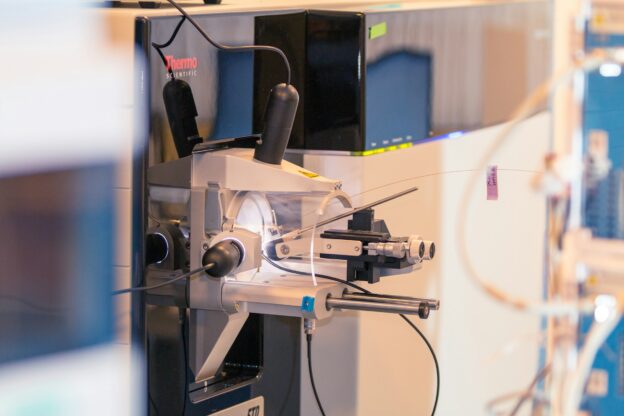If you work in a lab, analysis, precision, efficiency, and reliability are paramount. Liquid Chromatography Mass Spectrometry (LC/MS) is a groundbreaking technology at the forefront of reliable sample analysis. It combines the robust separation capabilities of liquid chromatography with the precise mass analysis of mass spectrometry, offering scientists unprecedented insights into complex sample compositions. In this blog, we aim to help you sell or buy used LC/MS equipment.
What is an LC/MS Sample Analyzer?
Liquid chromatography–mass spectrometry (LC/MS) is an analytical chemistry technique that combines the capabilities of liquid chromatography (or HPLC) with mass spectrometry (MS). This coupling enhances the strengths of each technique, making it popular in chemical analysis.
Liquid Chromatography (LC): LC separates mixtures with multiple components, allowing for the isolation of individual compounds. This separation is achieved based on the differences in the affinity of the compounds for the stationary and mobile phases within the chromatography system.
Mass Spectrometry (MS): MS provides spectral information about the compounds separated by LC. It helps in identifying or confirming the suspected identity of each component. MS is highly sensitive and provides selective detection, eliminating the need for complete chromatographic separation.
LC/MS is particularly suitable for metabolomics (analyzing small molecules for biological insights) due to its ability to cover a wide range of chemicals. This tandem technique finds applications in various fields, including biotechnology, environmental monitoring, food processing, and pharmaceutical, agrochemical, and cosmetic industries. It can analyze biochemical, organic, and inorganic compounds commonly found in complex samples of environmental and biological origin.
Since the early 2000s, LC/MS (specifically LC/MS/MS) has also been utilized in clinical applications, expanding its utility to medical diagnostics and research.
Tips for Selling Used LC/MS Equipment
If you are selling an LC/MS system, focus on meeting the needs of potential buyers. When creating your listing, highlight the points that are most important to buyers in various industries as well as the unique value proposition of your LC/MS system. By gaining insights into buyer preferences, you can tailor your description to better match market demand and emphasize its key relevant features and benefits.
If possible, offer a demonstration. This can instill confidence in potential buyers. Also, including demonstrations in your listing can give you an advantage over other sellers who are not offering demonstrations. This can be a deal-maker.
Another way to stand out is by offering After-Sales Support. This includes offering technical assistance, training programs, and maintenance agreements to help buyers optimize the performance and longevity of their investment. This demonstrates your commitment to the buyer while increasing the perceived value of the sample analyzer you are selling.
Tips for Buying Used LC/MS Equipment
An LC/MS system can be a significant investment requiring you to carefully consider various factors. Ensure you select the right analyzer to meet your specific needs. Here are some tips for buying one second-hand.
Clearly define the specific requirements and objectives of your laboratory. This includes identifying the types of samples to be analyzed, required analytical capabilities, throughput needs, budget constraints, and compatibility with existing laboratory infrastructure. Understanding these factors upfront will help you know if the specific LC/MS system is what you need.
If you are evaluating several sample analyzers, consider assessing the equipments’ sensitivity, selectivity, resolution, speed, ease of use, reliability, and maintenance requirements. By prioritizing factors based on their importance to the laboratory’s analytical workflow, you can make more informed decisions and choose the analyzer that offers the best overall value.
Search online for recommendations and reviews from other laboratories or industry experts about their experience with the system you are interested in. Unbiased reviews provide valuable insights.
Finally, you can negotiate price and warranty options with the seller.
Conclusions
Buying and selling used sample analyzers offer significant cost savings advantages. For sellers, when you create your description, keep in mind what features and benefits your potential buyer needs, and if you can, offer a demo to build trust and accelerate the deal. For buyers, make sure you understand exactly what you need from the LC/MS system and seek online customer reviews before purchasing.
You can see the latest used LC/MS equipment on our website. We are the one-stop site for used lab equipment on the web, connecting 1000’s of buyers and sellers.


